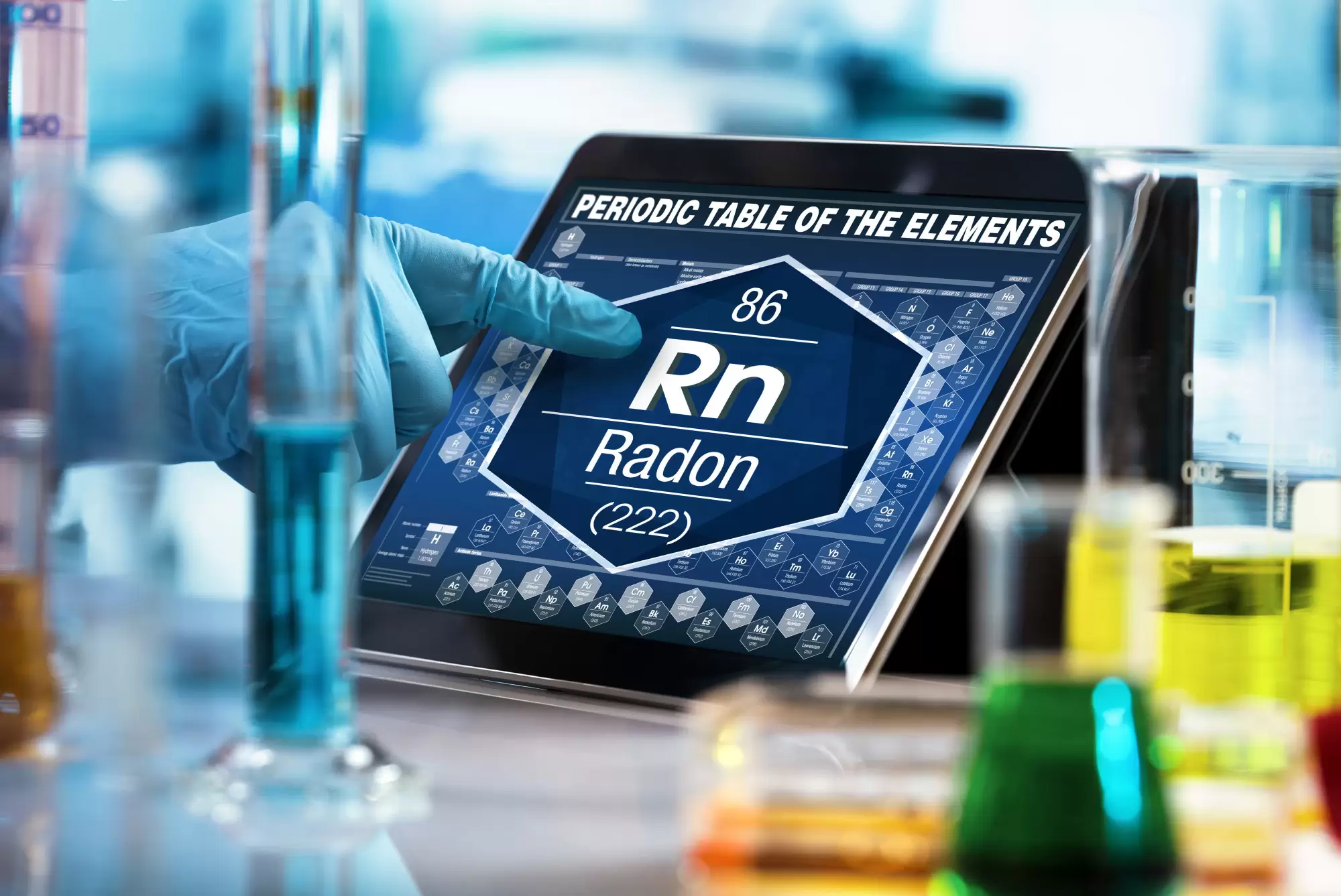

Scientist consulting information on the computer of the periodic table of elements / researcher working on the digital tablet data of the chemical element Radon Rn
Did you know that more than 7 million homes were sold last year in the US? The real estate market is sizzling nationwide, and competition for home purchases is at an all-time high.
If you recently purchased a house in a desirable neighborhood, it’s likely you’ve had to make some sacrifices to get your offer accepted. Many people offer more than the asking price, while others offer to forego a home inspection.
While getting a house is better than not getting one, skipping an inspection means you might be living with radon.
What is radon? It’s something you don’t want to be subjecting your family to, that’s for sure.
Keep reading below to learn more about radon gas, the dangers of radon, and how to find out if you have radon in the home.
Radon exposure is dangerous. And all harmful radon exposure happens indoors.
Indoor air quality in the US and abroad is worse than most people realize. The EPA suggests that indoor air quality in our homes and workplaces is far worse than outdoor air quality.
And since we spend the bulk of our time indoors, this has the potential to cause some serious health problems.
Some indoor air pollution is caused by cleaning products, cooking methods, and candles. Other forms of pollution are caused by gases released from synthetic building products like carpets or insulation.
But radon gas comes from the ground surrounding your home. Cracks and holes in the foundation allow radon to get into the home.
And unless it’s adequately ventilated, the radon is trapped, exposing your family to dangerous consequences.
So what is radon? It’s a dangerous gas that finds its way into many homes. It’s radioactive, and exposure to radon has the potential to cause lung cancer and other damaging effects.
The problem with radon is that it’s colorless and odorless, so you have no idea if you are being exposed to it.
Radon is found naturally in the atmosphere, but it’s dispersed enough that it doesn’t cause any problems. Harmful radon exposure always occurs indoors.
With houses and businesses sealed shut, the radon gas has nowhere to go. If it could get out, it would disperse rapidly, and the threat would be gone.
So how can you determine if your home is suffering from radon exposure? Radon testing is available that will tell you how much radon is present and, likely, where it’s coming from.
Radon is very tough to detect. The only way to do it is with specialized equipment. Click here to hire radon professionals today to test for radon.
Regardless of how much radon is present, remediation techniques make it possible to reduce radon levels by upwards of 99%, making your home safe once again.
So what is radon? It’s a radioactive gas found naturally in the atmosphere. But when it makes its way into the home through holes or cracks in your foundation, exposure can become quite dangerous.
Luckily, testing and remediation are available to quickly identify and eliminate harmful radon. Why wat, get tested today.
Looking for more tips like this? Visit the rest of our blog now to keep reading.
Burnt-on grease isn't just an eyesore. It stinks up the kitchen and makes cooking a…
Hey there! Ready to embark on a historical journey with Air India? Whether you're a…
In 2017, altcoins were seen as experimental side projects to Bitcoin. By 2021, they became…
Shopping centers in Las Vegas have a unique opportunity to stand out by offering not…
Levitra, a widely recognized medication for treating erectile dysfunction (ED), has proven to be a…
Have you ever looked down at your carpet and wondered if there’s a budget-friendly way…